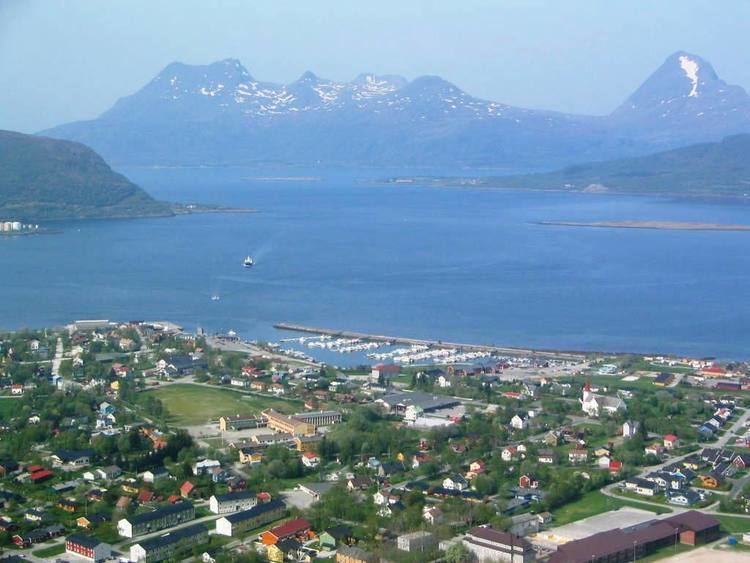Country Norway District Helgeland Area rank 342 in Norway Area 183.1 km² Local time Friday 3:20 PM University Nesna University College | County Nordland Administrative centre Nesna Demonym(s) Nesnaværing Population 1,808 (2011) Official language form Bokmål | |
 | ||
Weather 1°C, Wind S at 11 km/h, 83% Humidity Points of interest Elvsanden, Kvannvikstranda, Sørstranda, Kvitnesfjæra, Slettstranda | ||
Nesna is a municipality in Nordland county, Norway. It is part of the Helgeland traditional region. The administrative centre of the municipality is the village of Nesna. Other villages in Nesna include Handnesneset, Husby, Saura, and Vikholmen.
Contents
- Map of Nesna Municipality Norway
- General information
- Name
- Coat of arms
- Churches
- Government
- Municipal council
- Notable residents
- References
Map of Nesna Municipality, Norway
The municipality consists of the three islands Tomma, Hugla (known as "Hugløy" by its inhabitants), and Handnesøya, and one peninsula that bears the name of the municipality, Nesna. The old Husby Estate is headquartered in Husby on Tomma island.
The Coastal Express arrives two times a day at the port of Nesna, the northbound arrives 05:30 and the southbound 11:15. The village of Nesna is also home to Nordland's education center Nesna University College, and there is also the KVN High School, and Nesna Church.
General information
Nesna was established as a municipality on 1 January 1838 (see formannskapsdistrikt). The western district of Nesna (population: 1,348) was separated from Nesna on 1 July 1888 to form the new municipality of Dønnes. This left Nesna with 2,958 residents. On 1 January 1919, the Bardalssjøen farm (population: 4) was transferred from Hemnes to Nesna. In 1945, a small area of southern Nesna (population: 26) was transferred to Leirfjord.
On 1 January 1962, part of the island of Løkta (population: 80) was transferred from Nesna to Dønna and part of the island of Tomma (population: 80) was transferred from Dønnes to Nesna. Then on 1 January 1964, the Bardalssjøen area of Nesna, located south of the Ranfjorden, was transferred to Leirfjord. On that same date, the part of Nesna around the inner part of the Sjona fjord was transferred to Rana.
Name
The municipality (originally the parish) is named after the old Nesna farm (Old Norse: Nesnar), since the first church was built there. The name is derived from the word nes which means "headland". The name was historically spelled Nesne.
Coat-of-arms
The coat-of-arms is from modern times; they were granted on 23 June 1989. The arms are a canting of the name of the municipality because they show a yellow-colored "headland" or peninsula surrounded by blue water (nes is Norwegian for headland).
Churches
The Church of Norway has one parish (sokn) within the municipality of Nesna. It is part of the Nord-Helgeland deanery in the Diocese of Sør-Hålogaland.
Government
All municipalities in Norway, including Nesna, are responsible for primary education (through 10th grade), outpatient health services, senior citizen services, unemployment and other social services, zoning, economic development, and municipal roads. The municipality is governed by a municipal council of elected representatives, which in turn elect a mayor.
Municipal council
The municipal council (Kommunestyre) of Nesna is made up of 17 representatives that are elected to every four years. Currently, the party breakdown is as follows:
